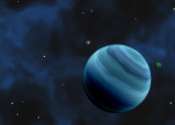Newborn giant planet grazes its star
For the past 20 years, exoplanets known as 'hot Jupiters' have puzzled astronomers. These giant planets orbit 100 times closer to their host stars than Jupiter does to the Sun, which increases their surface temperatures. ...









